A range of programming languages are being used for AI applications, including Python, Java and R. However, Mojo stands out for its focus on simplicity, readability, and compatibility with existing frameworks. Extensive documentation and powerful features are additional assets.
The artificial intelligence (AI) market has experienced unprecedented growth in recent years, establishing itself as a transformative force across various industries. The global AI market encompasses a wide range of technologies and applications, contributing to its remarkable size. From machine learning and natural language processing (NLP) to computer vision and robotics, AI has found applications in diverse sectors, including healthcare, finance, manufacturing, retail, and more.
Market size and use cases
The AI market’s size and influence are expanding rapidly, driven by its ability to revolutionise diverse industries and improve operational efficiency. According to the research analytics of Statista, the AI market is poised for significant growth, with a projected market size of US$ 305.90 billion by 2024.
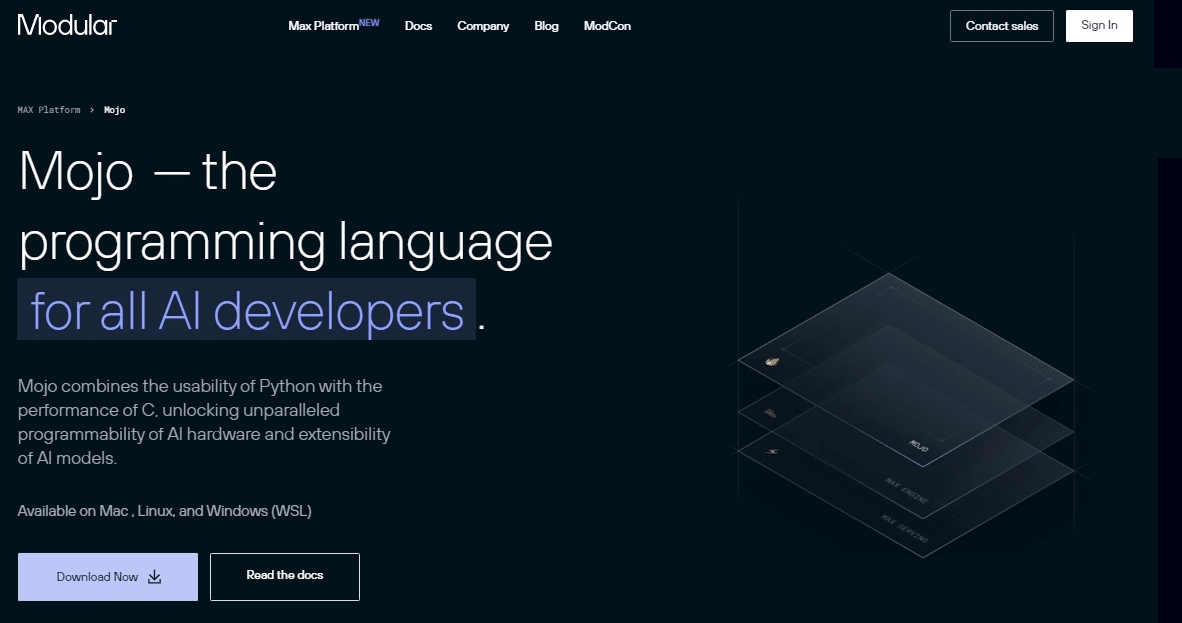
In a global context, the United States is set to dominate with the largest market size, reaching US$ 106.50 billion in 2024. Anticipated to exhibit an impressive compound annual growth rate (CAGR) of 15.83% from 2024 to 2030, the market is expected to reach a substantial volume of US$ 738.80 billion by the end of the forecast period.
One of the primary drivers behind the growth of the AI market is the increasing recognition of its potential to enhance efficiency, productivity, and decision-making processes. In healthcare, for example, AI is being utilised for medical image analysis, drug discovery, and personalised medicine. In finance, it aids in fraud detection, algorithmic trading, and risk management.
The retail sector benefits from AI through personalised recommendations, inventory management optimisation, and customer service automation. Manufacturing industries leverage AI for predictive maintenance, quality control, and process optimisation. The broad spectrum of use cases reflects the adaptability and versatility of AI technologies.
In addition, the rise of edge computing and the proliferation of Internet of Things (IoT) devices contribute to the expansion of AI applications. Edge AI allows processing and analysis of data closer to the source, reducing latency and enhancing real-time decision-making capabilities.
Looking ahead, the AI market is poised to continue its upward trajectory. Emerging technologies like quantum computing and advancements in natural language processing are expected to open up new possibilities for AI applications. The ethical and regulatory considerations surrounding AI, including issues related to bias and privacy, will also play a crucial role in shaping the market’s future.
Programming platforms for AI applications
Various programming languages are utilised in AI, each catering to specific needs and preferences.
Mojo
URL: https://www.modular.com/max/mojo
Mojo is an emerging high performance programming language that has garnered attention for its specialised focus on AI applications development. Designed to cater to the unique needs and complexities of AI programming, Mojo aims to simplify the creation of intelligent systems by providing a concise and efficient syntax. One of the key features that sets Mojo apart is its emphasis on readability and ease of use, making it accessible to both seasoned developers and those new to the field of AI. The language incorporates a range of built-in functions and libraries tailored specifically for AI tasks, streamlining the coding process and reducing the time required for development.
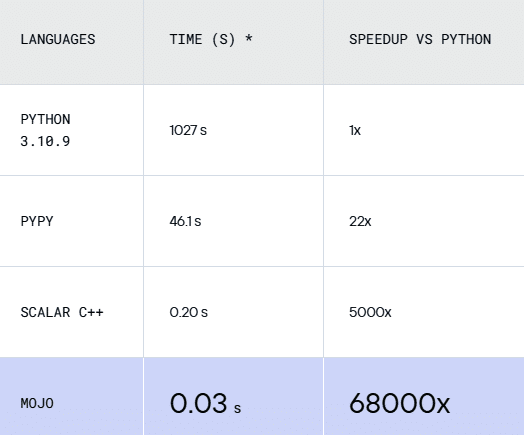
Mojo integrates seamlessly with popular machine learning frameworks, enhancing its versatility and enabling developers to leverage existing tools and resources. This compatibility contributes to a more collaborative and integrated approach to AI development. The language is equipped with robust support for neural networks, deep learning, and other advanced AI techniques, providing a comprehensive environment for tackling sophisticated projects. Additionally, Mojo incorporates features that facilitate parallel processing, optimising performance and enabling the efficient utilisation of hardware resources.
In terms of community support and documentation, Mojo has actively cultivated a community of developers and researchers, fostering a collaborative ecosystem. The language’s documentation is comprehensive, offering detailed explanations, examples, and tutorials to aid developers in mastering its intricacies. Regular updates and contributions from the community ensure that Mojo remains at the forefront of AI development tools.
Python
Python is a predominant language in AI development due to its simplicity, readability, and extensive libraries. It has become a prominent language for AI due to its versatility and a rich ecosystem of libraries. These libraries provide a wide range of tools for tasks such as machine learning, natural language processing, computer vision, and more. A few key Python libraries that are extensively employed in AI development are listed below.
- NumPy: A fundamental library for numerical operations in Python, NumPy facilitates efficient handling of large arrays and matrices, serving as a cornerstone for various AI libraries.
- Pandas: Ideal for data manipulation and analysis, Pandas provides data structures like DataFrames, making it easy to clean, transform, and analyse datasets, which is crucial for AI tasks.
- Scikit-learn: This machine learning library offers simple and efficient tools for data mining and data analysis. It includes various algorithms for classification, regression, clustering, and dimensionality reduction.
- TensorFlow: Developed by Google, TensorFlow is an open source machine learning library widely used for building and training deep learning models. It supports neural network architectures and is employed in various AI applications, from image recognition to natural language processing.
- PyTorch: This alternative deep learning library has gained popularity for its dynamic computational graph and ease of use. PyTorch is extensively used in research and development of deep learning models.
- Keras: Often used in conjunction with TensorFlow or Theano, Keras is a high-level neural networks API that simplifies the process of building and experimenting with deep learning models.
- NLTK (Natural Language Toolkit): Focused on natural language processing (NLP), NLTK provides tools for working with human language data. It includes resources for tasks such as tokenization, stemming, tagging, parsing, and more.
- OpenCV (Open Source Computer Vision): A powerful library for computer vision tasks, OpenCV offers a plethora of functions and algorithms for image and video analysis. It is widely used in applications like object detection, face recognition, and image processing.
- Gensim: Specifically designed for topic modelling and document similarity analysis, Gensim is a library that facilitates working with large text corpora and training document embeddings.
- SciPy: Built on top of NumPy, SciPy is an open source library used for scientific and technical computing. It provides modules for optimisation, signal processing, statistical functions, and more, making it valuable in AI research and development.
These libraries collectively form a robust toolkit for AI developers, allowing them to implement a wide range of algorithms and models for various applications. Their open source nature and active communities contribute to their continuous improvement and adoption in the rapidly evolving field of artificial intelligence.
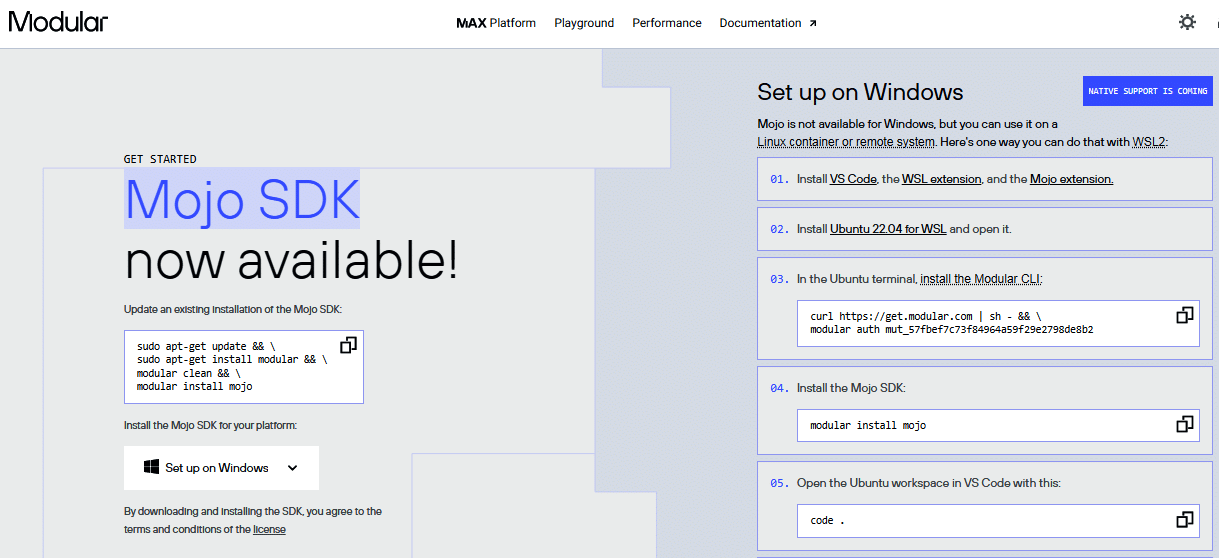
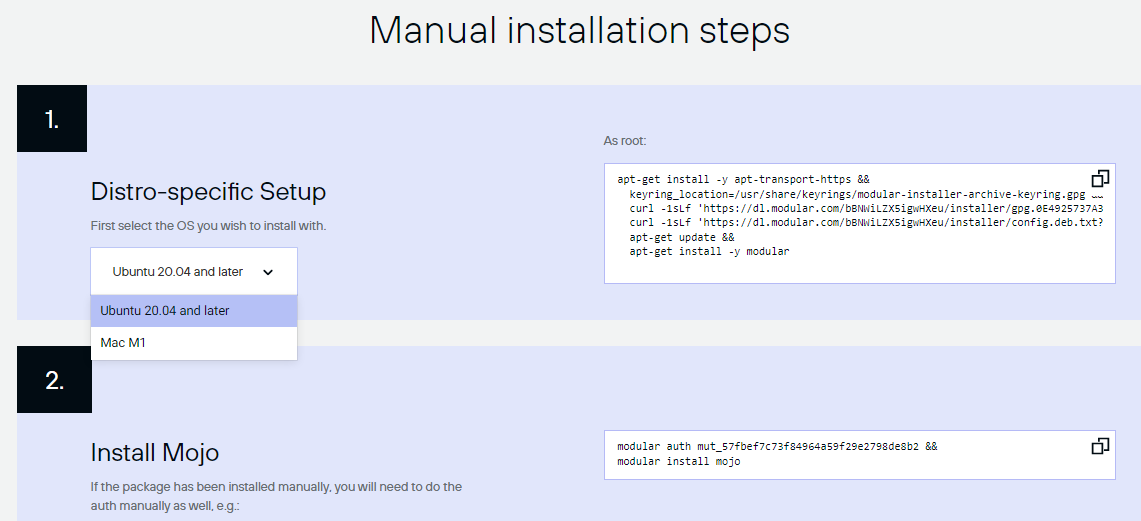
Java
Java is another significant player in AI, offering platform independence and scalability. It offers a plethora of libraries specifically designed for AI development, catering to various aspects of machine learning, natural language processing, and computer vision. Here are some notable Java libraries for AI development.
- Deeplearning4j (DL4J): A robust and versatile deep learning library for Java, it provides support for various neural network architectures, distributed computing, and compatibility with other popular machine learning frameworks. DL4J is well-suited for building and training deep neural networks.
- Weka: A comprehensive data mining and machine learning library offering a user-friendly graphical interface and supporting a wide range of algorithms for tasks such as classification, regression, clustering, and association rule mining. Weka is often used for educational and research purposes.
- Apache OpenNLP: Apache OpenNLP is a natural language processing (NLP) library for Java. It facilitates tasks like tokenization, part-of-speech tagging, named entity recognition, and language identification. OpenNLP is widely utilised in applications dealing with text processing and understanding.
- Smile: Smile is a machine learning library that focuses on efficiency and ease of use. It covers a variety of algorithms, including classification, regression, clustering, and dimensionality reduction. Smile is lightweight and designed for simplicity, making it a good choice for developers who want to quickly integrate machine learning into their applications.
- EJML (Efficient Java Matrix Library): EJML is a Java library for linear algebra operations, an essential component of many machine learning algorithms. It provides a simple and efficient way to perform matrix operations, making it a valuable tool for implementing mathematical computations in AI applications.
- Stanford CoreNLP: Stanford CoreNLP is a natural language processing library developed by Stanford University. It includes tools for tokenization, part-of-speech tagging, named entity recognition, sentiment analysis, and more. CoreNLP is widely used in applications requiring sophisticated linguistic analysis.
- DL4J-Playground: DL4J-Playground is an extension of Deeplearning4j that provides a user-friendly environment for experimenting with deep learning models. It offers a web-based interface for designing, training, and evaluating neural networks, making it accessible to developers with varying levels of expertise.
- JOONE (Java Object Oriented Neural Engine): JOONE is a neural network framework for Java that simplifies the implementation of artificial neural networks. It supports various types of neural network architectures and provides tools for training and testing models.
R
R, a statistical programming language, is favoured for its robust statistical and data analysis capabilities. It finds application in AI, particularly in fields like data science and machine learning.
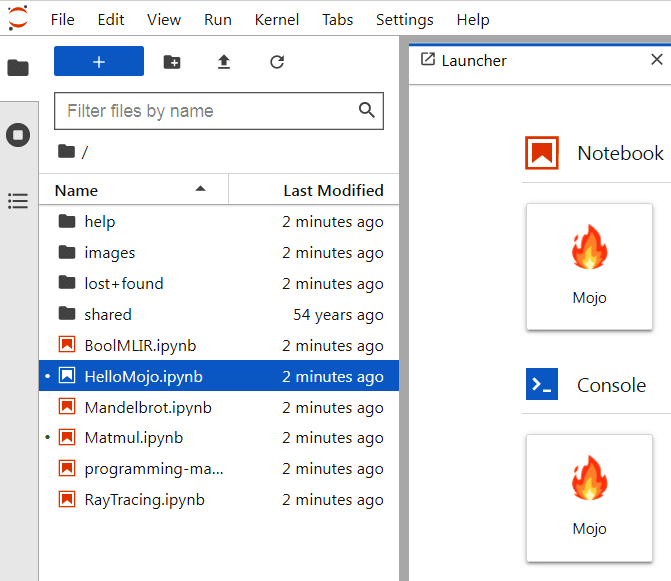
Python vs Mojo programming platforms
Mojo is a robust programming language tailored for AI developers, offering a unique blend of the user-friendly characteristics of Python with performance capabilities akin to C. This fusion results in an unparalleled combination that not only facilitates the ease of use associated with Python but also unlocks the raw power and efficiency reminiscent of low-level programming languages like C.
One of Mojo’s notable features is its ability to empower AI developers to program directly from the high-level abstractions of Python down to the hardware level. This includes addressing and manipulating a multitude of low-level AI hardware components without necessitating the use of more complex languages such as C++ or CUDA. This simplifies the development process by providing a seamless transition between high-level abstraction and low-level hardware programming.
The distinctive strength of Mojo lies in its capacity to harness the full potential of AI hardware. It enables developers to leverage the capabilities of multiple cores, vector units, and various specialised accelerator units, optimising the performance of AI models. The language achieves this through the integration of an advanced compiler and a heterogeneous runtime environment, ensuring efficient utilisation of hardware resources.
Mojo promotes the idea of achieving performance levels comparable to C++ and CUDA without introducing the associated complexities. This is a significant advantage, as it allows developers to tap into the full power of the underlying hardware architecture without compromising on ease of programming or facing the steep learning curve often associated with low-level languages.
Modular MAX Engine
The Modular MAX Engine, when employed in conjunction with various integrations through MAX Serving services, stands out as a powerful tool for AI applications, and it derives its efficiency from being powered by Mojo, recognised as the fastest and most portable programming language for AI applications. The key feature of the Modular MAX Engine lies in its modular design, allowing developers to seamlessly integrate it with different services offered by MAX Serving. This modularity enhances flexibility and adaptability, enabling the engine to cater to a diverse range of AI applications and scenarios.
Mojo, the underlying programming language driving the Modular MAX Engine, brings a distinctive set of characteristics to the forefront. Known for its speed and portability, Mojo is designed to optimise the performance of AI applications. Its speed is attributed to the incorporation of a Just-In-Time (JIT) compiler, which translates high-level code into machine code at runtime, facilitating swift execution. This is particularly crucial in AI, where computational efficiency is often a critical factor.
The portability of Mojo is a significant asset, allowing AI applications to run seamlessly across different platforms without compromising performance. This ensures that the Modular MAX Engine, built on Mojo, can deliver consistent and high-performance results across a variety of environments.
The synergy between the Modular MAX Engine and Mojo programming language provides a robust solution for AI applications. The engine’s modularity, combined with Mojo’s speed and portability, results in a versatile and efficient toolset for developers working on diverse AI projects, offering the flexibility to integrate with various services via MAX Serving while ensuring top-tier performance.
In essence, Mojo emerges as a compelling choice for AI developers seeking a language that seamlessly combines the accessibility of Python with the high-performance capabilities of languages like C, offering a versatile and efficient platform to scale applications from the abstract layers of Python to the intricate details of low-level AI hardware programming.
Working with Mojo
The Mojo SDK can be downloaded and installed using the URL https://developer.modular.com/download.
Mojo programming can be implemented through Jupyter notebooks in web browsers, locally on Linux systems, and also on macOS. Currently, Mojo Playground (https://playground.modular.com/) is available for developers and researchers to perform the implementations.
The choice of programming language for AI applications depends on the specific requirements and preferences of developers, with Python, Java, R, Lisp, and Prolog being notable contenders, each with its own set of libraries and frameworks. Mojo stands out as a promising programming language specifically tailored for the development of AI applications. Its focus on simplicity, readability, and compatibility with existing frameworks positions it as a valuable asset for both seasoned AI developers and newcomers entering the field. With its dedicated community, extensive documentation, and powerful features, Mojo holds the potential to play a significant role in shaping the future landscape of AI programming.













































































